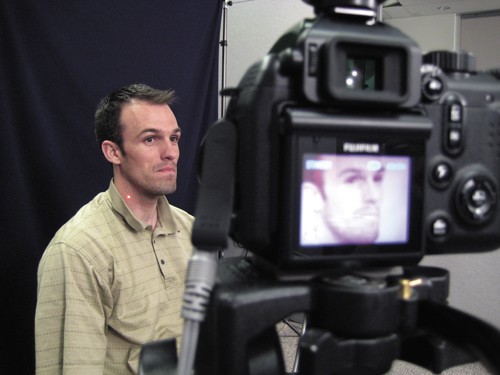The new travel document requirements at border ports of entry mark one of many new initiatives by the Department of Homeland Security to secure the U.S./Mexico border.
The Western Hemisphere Travel Initiative went into effect June 1, 2009, as a part of the Intelligence Reform and Terrorism Prevention Act of 2004. The Western Hemisphere Travel Initiative requires that U.S. citizens have a passport, passport card, enhanced driver’s license or other approved forms of identification when crossing the border.
Limiting the number of documents accepted at the ports of entries has helped identify the use of false documents and forms of identification to enter the United States, said Bonnie Arellano, acting chief of Public Affairs for the Customs and Border Patrol Office of Field Operations.
“”When you think about the fact that if you have 8,888 different types of documents or more coming into this country previous to the Western Hemisphere Travel Initiative, that’s a huge help on our part,”” she said. “”The Nogales port of entry in 2006 was number four in the country for document fraud.””
Decreasing the number of documents has increased law enforcement activity at the ports of entry, Arellano said.
“”We do more prosecutions now than we did before,”” she said.
The Western Hemisphere Travel Initiative is just one of the measures that the Department of Homeland Security has taken to enhance law enforcement at the border. In 2008, the Department of Homeland Security chose the UA to be the lead research university on border security technology and immigration policy, creating the Center of Excellence for Border Security and Immigration, said Elyse Golob, executive director for the center.
“”We’re conducting long-term research to address the continuing and changing problems of border security and immigration — to train the next generation of scientists and researchers who will continue to look at these issues,”” she said.
The center works with multiple departments on campus, including Eller College of Management’s Department of Management Information Systems researching detection deception; the Optical Sciences and Engineering departments researching sensors; and the Center for Latin American Studies, Mexican American Research Center, and Udall Center researching immigration and border policy, Golob said.
She added that the purpose of the center was to examine issues of border security and policy through objective research.
“”There’s often a lot of emotion and political rhetoric that enters the discussion on border security,”” Golob said. “”I feel like the work that our center is doing and our role is to be objective, to be neutral and to be driven by scientific data. And (to) give well-informed research findings and policy recommendations to help border security and immigration policy.””
The creation of the center came from the Department of Homeland Security’s interest in tackling the issue of border security from multiple areas, Golob said.
“”On a national level, the increase in border security, personnel and technology has been going on for a few years, for the last five years or so,”” she said. “”They’re looking to optimize the best usage of technology and policy and personnel in protecting the border.””
The increase in technology and personnel has been a strategy for securing the border for over a decade, said Paola Molina, a graduate associate with the sociology department.
“”Beginning in 1994, the then-Immigration and Naturalization Service began launching a series of operations to strengthen the southwest border based on a strategy of ‘prevention through deterrence,'”” she said. “”By increasing fencing, lighting, personnel and surveillance equipment along the main gates of illegal entry … migrants would experience increased chances of apprehension and would be deterred from crossing into the U.S.””
Whether the prevention-through-deterrence approach is an effective way to secure the U.S./Mexico border is questionable, Molina said.
“”While the number of people attempting to cross the border at corridors such as San Diego and El Paso has dramatically decreased, the overall number of apprehensions has not,”” she said. “”With the closure of urban routes, people have been crossing the more remote and less policed mountain and desert regions such as the Arizona-Sonora desert. Consequently, rather than stopping the flow of unauthorized immigrants, the strategy of prevention through deterrence has merely displaced it.””
The interdisciplinary aspect of Center of Excellence for Border Security and Immigration will be useful in contributing to border security initiatives, Molina said.
“”I think that the UA has the unique opportunity to advance interdisciplinary systematic research on immigration,”” she said.









